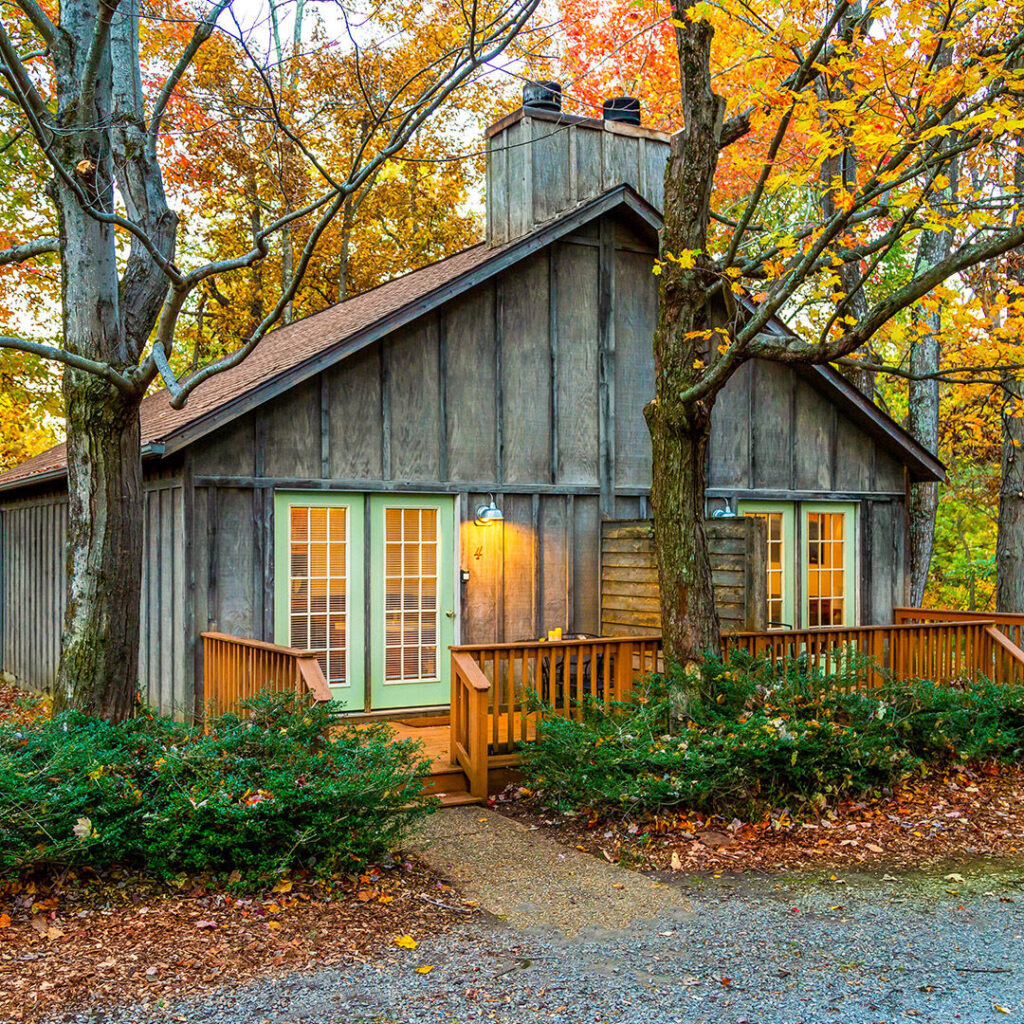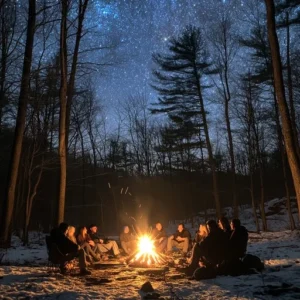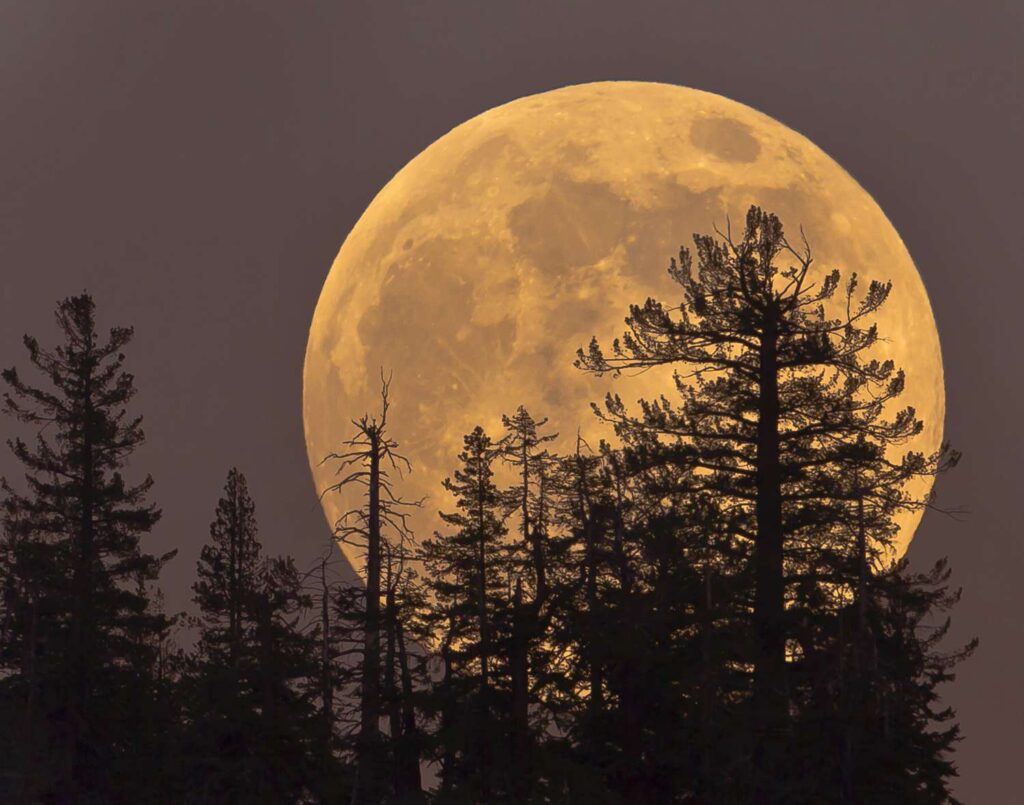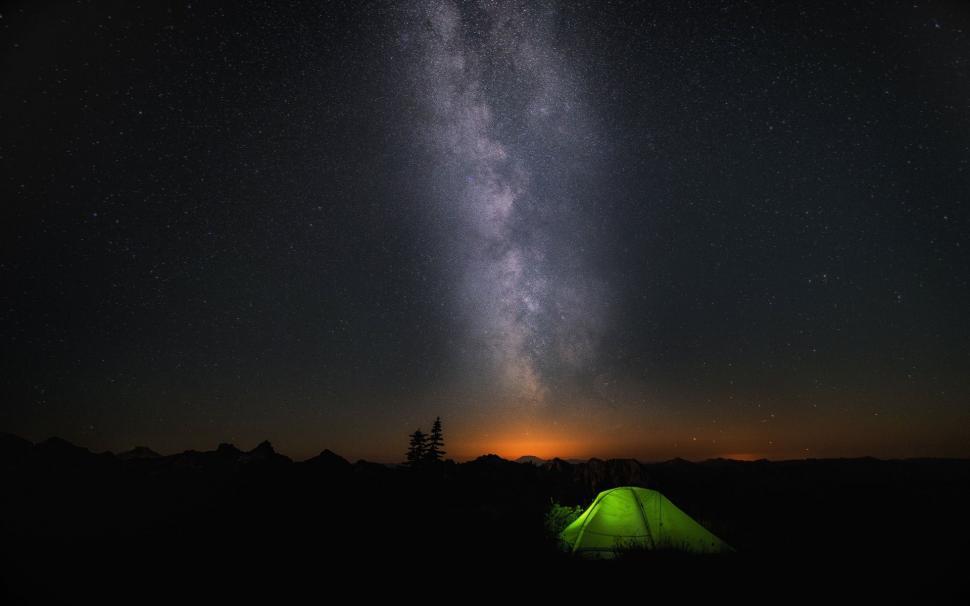Events & Locations for Astronomical Wonders
Astrotourism in Nelson County
Tap into your inner astronomer and admire the breathtaking views of the Dark Skies of Nelson County
Winter Solstice Celebration at The Quarry Gardens
December 20 @ 4:00 pm – 8:00 pm
Bring a snack to share(or just for yourself) to this community celebration to welcome back the return of the light. Big bonfire if the weather permits.
Night sky events to see in December, from a supermoon to the magical winter solstice
This month will bring some striking celestial sights, including one of the year’s best meteor showers and a glowing Saturn-moon pairing…
Supermoon—December 4
The final full moon of the year is also a supermoon. That’s when the space rock’s full phase coincides with its close approach to Earth, known as its perigee. At this time, the moon can appear up to 14 percent larger and 30 percent more luminous than when it’s at its farthest point from our planet, known as its apogee.
Mercury reaches greatest elongation—December 7
Mercury rarely strays far from the sun’s glare, but on December 7, it swings to its greatest elongation—its widest visible separation from the sun. It’s the best time to see the “swift planet” without the sun’s obscuring glow. Look for it around an hour or so before sunrise the morning of December 7. It will rise above the eastern horizon, with Venus following in tow.
For the most striking view, catch the moon as it rises around sunset in the eastern sky. An optical trick known as the moon illusion makes it appear extra huge—even more so when it’s around structures like buildings or trees.
Geminid meteor shower December 13–14
Expect heaps of sky confetti during the Geminids’ peak from December 13–14. It’s historically one of the most prolific and reliable annual showers, producing anywhere from 60 to 120 meteors per hour during peak under pristine conditions. This year’s setup is exceptionally favorable.
The shower becomes visible around 10 p.m.; the peak night’s roughly 30-percent illuminated waning crescent moon won’t rise until around 2 a.m. That means, with clear, dark skies, astronomy enthusiasts can enjoy hours of uninterrupted meteor-scouting. Watch for the spectacle’s yellow-tinged streaks and especially bright flashes, known as fireballs, which can appear anywhere in the sky.
Optimal Orion nebula viewing—December 15
December is prime time to peer at the whimsical Orion Nebula. This star-forming region, a heap of dust and gas also known as Messier 42, is among the faintest objects humans can see with the naked eye. A telescope will sharpen the nebula’s signature features, including blue, pink, and green wisps.
The view is best on December 15, when it’s at its highest point in the night sky around midnight local time. Find this luminous star nursery beneath Orion’s familiar three-star belt.
Comet 3I/ATLAS makes closest pass to Earth—December 19
The seven-mile-wide Comet 3I/ATLAS will reach its closest point to Earth on December 19, passing around 170 million miles from us. Now through mid-December provides optimal viewing of this rare visitors. It’s just the third known interstellar object in history to pass through our solar system.
Astronomers believe the comet originated from a faraway star system in the Milky Way and could be over seven billion years old. The sight will not be bright enough for naked-eye visibility, but those with telescopes or access to observatories can monitor how the object survived its close pass by the sun in October. Look for it near the constellation Leo.
Winter solstice: Dec. 21 at 10:03 a.m. ET
Winter officially begins in the Northern Hemisphere on Sunday, Dec. 21, at 10:03 a.m. ET, marking the year’s December solstice. South of the equator, the same date signals the start of summer.
At that moment, the Northern Hemisphere is tilted farthest from the sun, bringing the shortest day and longest night of the year.
While the solstice marks the start of astronomical winter, meteorological winter begins on Dec. 1.
Ursid meteor shower: Dec. 21–22
The year ends with the Ursids, a smaller meteor shower that peaks on the night of Dec. 21–22 — the first night of astronomical winter following the solstice.
This final meteor shower of 2025 usually produces around 10 meteors per hour, though it benefits from long, dark nights at this time of year. The best chance to spot the Ursids will come late at night and before dawn, when the radiant near the constellation Ursa Minor climbs higher in the northern sky.
While the Ursids are far less active than the Geminids, they’re still worth a look as it will be one of the final meteor showers for months. After the short-lived Quadrantids peak in early January, the next meteor shower does not take place until April.
Astronomical League for information and printable handouts useful for everyone from the casual observer to the moradvanced amateur astronomer. They also offer printable handouts fo every month of the year, centered around what’s up in the sky mid-month.
Dark Skies Packages
Indigo House: Dark Skies Package
Leave your flashlights behind and look for constellations, wish on a shooting star, and dream of the mysteries that lie beyond the Milky Way.
Just 10 minutes from Wood Ridge Farm Brewery, relax and recharge at the Indigo House, a modern bed & breakfast for outdoorsy humans and kind dogs. Add the Dark Skies Package to your stay and receive:
- A Mediterranean picnic and dessert for two from Basic Necessities
- Late check-out at 1 pm
- Locally roasted coffee delivered to your room
 Love Ridge: Stargazing Experience
Love Ridge: Stargazing Experience
STAY AND STARGAZE
20% off Your 3-Day Stay + Stargazing Package.
A new season is arriving at Love Ridge.
September marks the start of one of the most breathtaking times of year in the Blue Ridge Mountains, when the hills transform into a patchwork of vibrant fall foliage and the crisp air makes every hike, wedding, and evening under the stars even more magical. At Love Ridge, we’re excited to welcome couples celebrating their big day against this stunning backdrop, as well as families and friends looking to soak in the autumn colors.

Devils Backbone Dark Skies Camping
We’re excited to help shine a light on the importance of preserving our incredible night skies here in the Blue Ridge 🌌
From now through December 31st, book any campsite at Devils Backbone Camp with code DARKSKIES and get 20% off your stay*. Whether you’re here to hike, stargaze, or sip a cold one, there’s no better place to enjoy the beauty of Nelson County than right here at Basecamp Brewpub & Meadows. Book your stay now at https://www.dbbrewingcompany.com/camp-at-basecamp and visit the link in our bio to learn more about the Dark Skies initiative. *BLACKOUT DATES AND RESTRICTIONS APPLY.

Observing Windows
An observing window is defined as a period of time (allowing for observing conditions) that provides at least 1 and 1/2 hours of observing after astronomical twilight, which occurs one and one half hours after sunset, and which takes place when the Moon provides less than 25% illumination.
Observing sessions or activities should take place only when clear, mostly clear or a few clouds from time to time are forecast, based on both the National Weather Service and the Clear Sky Clock. Because of these variables, scheduled observing sessions or activities should be planned with a rain date in mind, which should be announced no later than 6:00 pm on the day prior to an event.
- Visit the Charlottesville Astronomical Society Website
- Go to the Sky Conditions drop-down menu and choose the Clear Sky Clock for the Observatory on Fan Mountain – a tool used by amateur astronomers for a two-day look-ahead at upcoming observing conditions. It can be a bit on the conservative side but can be useful for re-scheduling an event or activity, if necessary. Then use the Weather Forecast tool in conjunction with the Clear Sky Clock.
Nautical Twilight (an hour after sunset): Observing the planets and brighter objects, plus satellites
Astronomical Twilight (an hour and a half after sunset): Nelson’s dark skies make their appearance, with the caveats mentioned above.
Dates
February 21-March 4
March 23-April 4
April 21-May 3
May 20-June 1
June 19-July 1
July 18-30
August 17-29
September 15-27
October 15-27
November 14-26
December 13-25
Out of this World Videos
Resources for Stargazers & Budding Astronomers
Organizations & Associations
International Dark-Sky Association
Charlottesville Astronomical Society
Maps & Charts
Dark Skies Participants
12 Ridges Vineyard and Winery
Acorn Inn
Afton Mountain B & B
Afton Mountain Vineyards Cottages
Avalon Art Gallery
Beech Grove Cabins
Blue Mountain Barrel House
Blue Mountain Brewery
Blue Ridge Parkway
Blue Toad Hard Cider
Bold Rock Hard Cider
Brent Manor Vineyards
Brewing Tree Brewing Company
Bryants Small Batch Cider and Brewery
Cabins at Crabtree Falls
Cardinal Point Farmhouse
DelFosse Farmhouse and Log Cabin
Devils Backbone Camp
Farmhouse at Veritas
Fenton Inn
Fortune’s Cove Preserve
Foxtrot at Pharsalia
Glenthorne Farm
Graces Place
Hazy Mountain Winery & Brewery
High Lonesome Cabin
Inn at Blue Mountain
James River State Park
Love Ridge Mountain Lodging
Lovingston Winery
Montebello Camping Fishing Resort
Montebello Country Store
Mountain Cove Vineyards
Orchard House B & B
Overland Expo East
Possum Trot
Red Hill B & B
Rockfish Ranch
Rockfish Valley Community Center
RockNCeek Cabin
Rockwell Ridge Inn
Silverback Distillery
Southern Comfort Lakeside Resort
Spruce Creek Park
Three Beeches
Valley Road Vineyard
Veritas Vineyard and Winery
Wild Man Dan’s Beercentric B & B
Wintergreen Resort
Wood Ridge Farm Brewery





